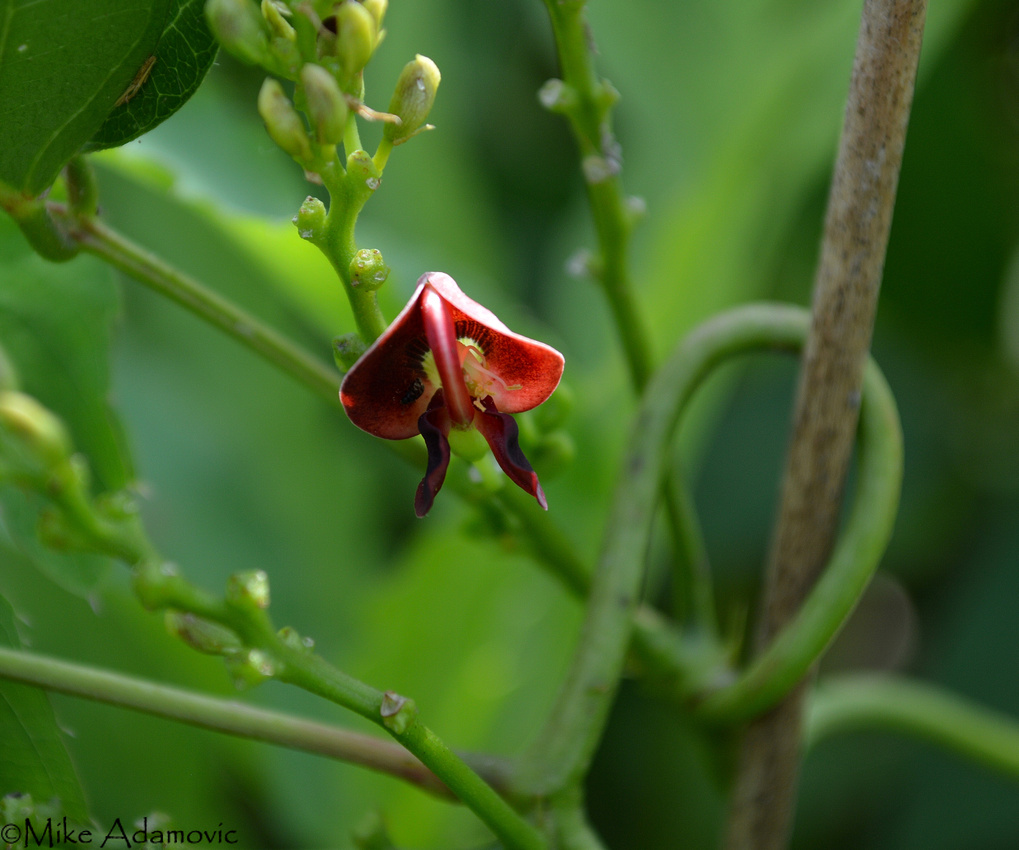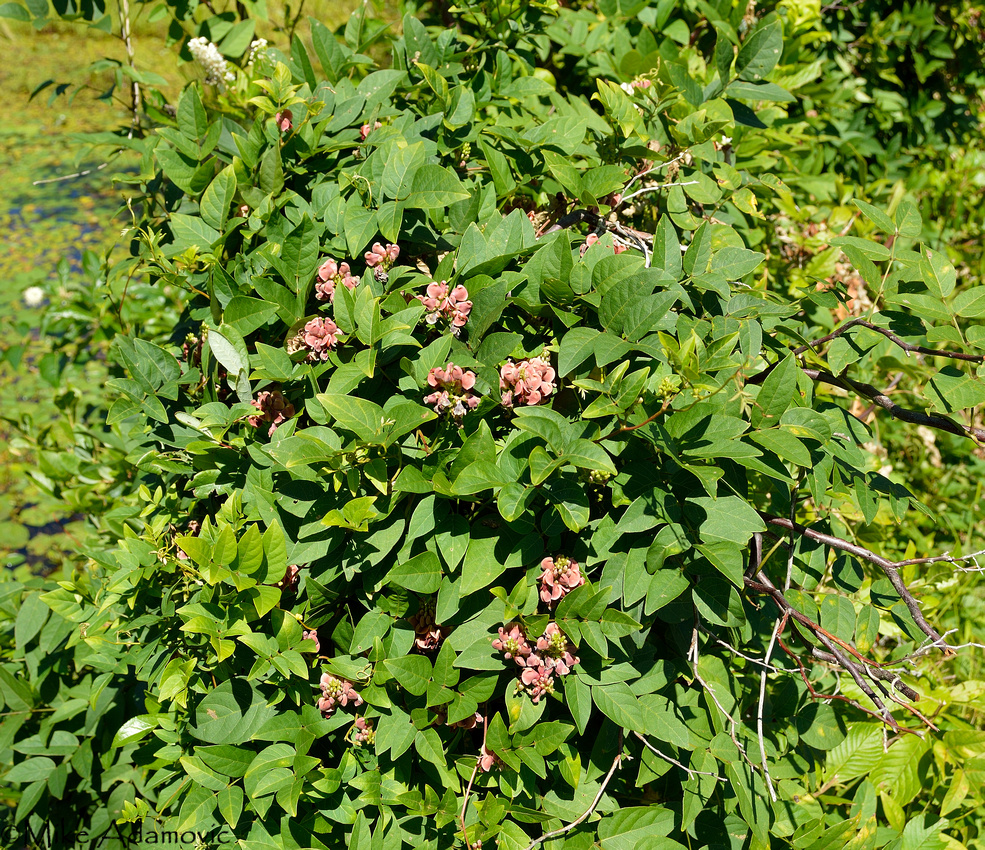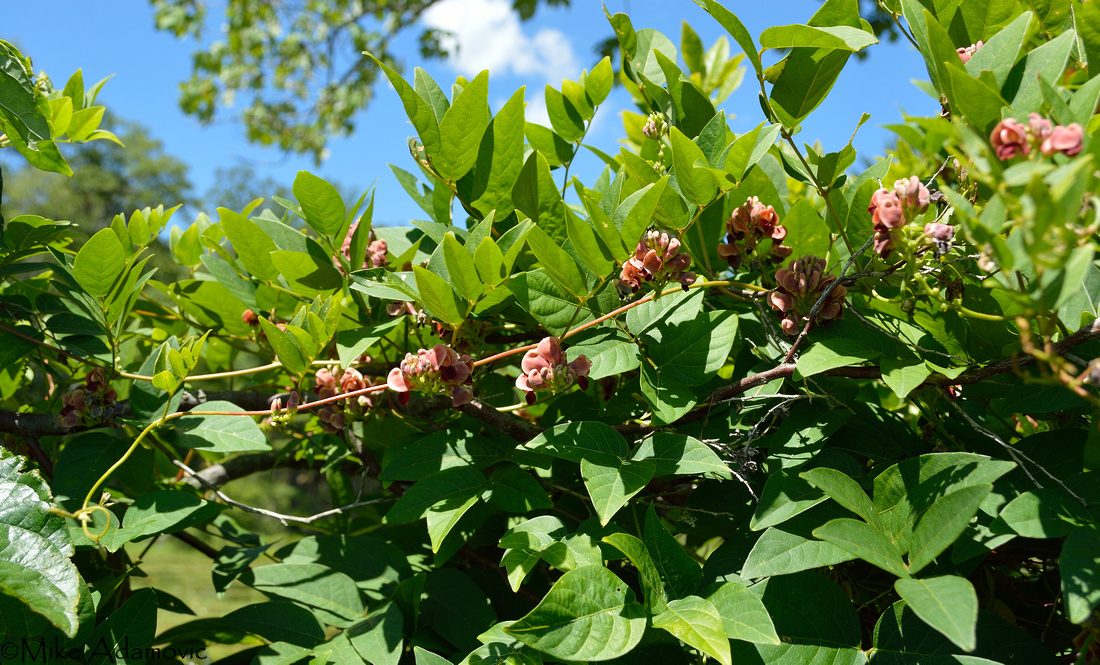Groundnut (Apios americana)


The groundnut (Apios americana) is a rather unusual specimen in the plant world, possessing an eclectic set of characteristics rarely seen bundled together in a single species. The roots, or rather tubers, have been used as a staple food source for millennia by the various indigenous tribes of North America. The adventuring naturalist, Henry David Thoreau, who partook in some wild specimens dug along the sloping sides of a sunny railroad embankment regarded it as a “fabulous fruit” with a “sweetish taste” that was “better boiled than roasted.” Its dark red or chocolate colored blossoms not only impress visually, but have one of the most fragrant scents of our native wildflowers. The delicate compound leaves, moreover, make an excellent groundcover that provides protection for a myriad of beneficial pollinating insects. The plump tubers also enrich the soil through a series of chemical and microbial reactions by a process known as nitrogen fixation. In short, groundnut, is one of the few native plant species that will satisfy the strictest requirements of even the most demanding gardener or plant enthusiast.
This long-lasting perennial vine prefers full sun and very moist, acidic soil. It has a wide distribution, occupying 2/3 of the country, ranging from Maine westward to Colorado. Under the right conditions, plants can proliferate to provide an expansive groundcover, or if grown near a trellis or other similar upright structure, a dense wall of decorative foliage. Plants, generally speaking, do well grown at home, as long as the proper moisture conditions are met. The quickest way for a population to become established is to utilize tubers rather than seeds. Tubers should be harvested in the fall when plants go into dormancy. Seeds from the bean-like seed pods can also be collected at around the same time, although propagation is often difficult. Whatever method preferred, space individuals 12-18 inches apart, as to leave ample room to expand. Groundnuts can be grown around other similarly dense herbaceous plants or shrubs, such as violets, raspberries, strawberries, and blueberries. With the added nitrogen groundnuts put into the soil, surrounding plants receive a nutrient boost that helps increase size, and, if fruit producing, crop yield.


Despite groundnut’s prodigious resume, its widest accolade is undoubtedly its ability to be used as a wild edible. It has a fine taste resembling a potato. Tuber size is variable, with some younger specimens being no larger than a peanut; on rare occasions, that they can attain sizes comparable to an apple or even a melon. Nutritionally speaking, the groundnut is one of the richest wild plants. It’s high in carbohydrates and protein levels are found in three times the proportion as an equal quantity of potatoes. Historical reports indicate that nearly every indigenous culture within the distribution of A. americana used it as a source of food on some level. The Pilgrims were taught of its value by the natives of Massachusetts, which undoubtedly helped them survive their first harsh winter in the New World. Despite their value, groundnuts have never successfully proliferated as a staple crop. With plants taking a minimum of 2-3 years to produce tubers large enough and in sufficient quantities to gather, while potatoes can be harvested in a single season, it doesn’t make sense to grow commercially. Additionally, plants have a tendency to grow outward in every direction, making cultivating them in straight rows rather tricky.
The atypical flowers of the groundnut make this species a curiosity to behold in any setting with its vastly unique shape, color, and scent. “The crumpled red velvety blossoms,” as Thoreau described, exhibit an inflorescence, often occurring in tall, upright clusters containing a dozen or more flowers that are thrust several inches above the foliage. The maroon-brown flowers which bloom from June to September are imbued with a delightful fragrance that permeates the air, and is somewhat similar in scent to violets, though much more potent and lasting (unlike the fleeting scent of the violet which contains a compound that temporarily inhibits smell receptors). A horticulturist at the turn of the 20th century pithily remarked that the groundnut “pays its tithe in fragrance, and brings into uniformity much that would be otherwise, unsightly, straggling growth.”



